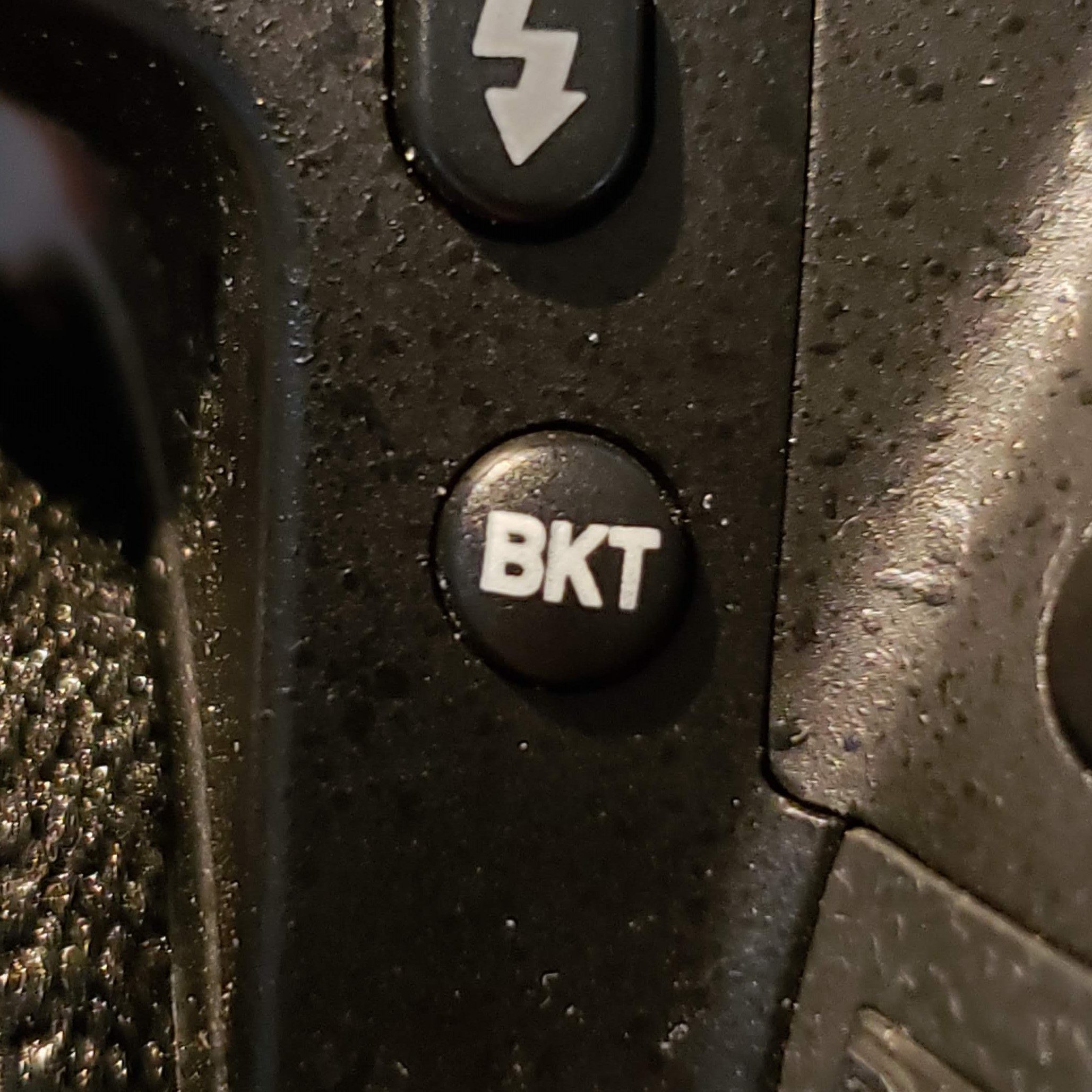Metering
Summary

- All DSLR cameras have a built-in light meter.
- The light meter measures the brightness of the image/subject.
- There are 3 typical metering options
- Matrix / Evaluative
- The camera tries to balance the light and dark areas of the whole image.
- This option is used most often.
- Center-weighted
- Meters whole image but gives more priority to the image's center.
- This option is used for portraits.
- Spot
- Metering will be taken at the location of the current focal point.
- This option is used for off center subjects with uneven lighting.
- Matrix / Evaluative
What is metering and why is it important?
Simply put, metering is how your camera determines the brightness of the subject. This function is what allows your camera to automatically adjust settings (like ISO, shutter speed, or aperture) to allow for a properly exposed image. This data allows modes like aperture priority and shutter priority to function correctly.
When in manual mode, this function also lets the user know if the selected aperture, shutter speed and ISO setting combination will result in an under or over exposed image. After working with this function for some time, you will realize that it doesn't always give you the best information. The age old saying "garbage in = garbage out" comes to mind, which means that if you don't help the camera by selecting the proper metering mode/method for your image, the wrong area will be metered and the camera will expose your image/subject incorrectly. This article dives into what each metering method & mode does in order to help you select the right one for your current situation. Selecting the right mode will ensure that you are getting the right data from the light meter and the appropriate setting will be selected.



When we learned about how the camera focuses, we learned that the method and how it is applied changes depending on if you are in live view or using the view finder. Metering is another camera function that acts differently when using the view finder vs live view.
In live view the metering is based on the light that reaches the image sensor. While using the viewfinder, metering is based on the light hitting the dedicated light sensor. This is a slight difference but one worth noting.
There are several articles out there about metering, but one that I have found very useful when first starting out is this article.
Typical DSLR Metering options
When first starting out, almost everyone is happy enough to let the camera automatically adjust the image exposure based on the default metering mode, which most of the time is Matrix / Evaluative Metering. However, using this method you might notice that there are times where your image came out extremely under or over exposed. This is due to the fact that the camera isn't metering what you wanted or the scene you are trying to capture isn't lit evenly. After experiencing this enough times you will realize how important it is to select the right metering mode.
Before we get into the different metering options there are two definitions that need to be explained:
- Metering method - This is the method used to determine and chose which areas in your photo gets metered.
- Metering mode - This determines how the areas selected by the metering method gets metered.
Now lets get into the different metering modes. Please note that the metering options can only be changed if you are in program mode, shutter priority mode, aperture priority mode and manual mode (all other modes the camera selects the metering method automatically).
There are 3 different types of metering modes:
- This mode first divides the frame into multiple zones which are then analyzed. These zone are then ranked in terms of importance with the most important zone being the zone that is closest to the focal point. The camera then trys to balance out the light and dark areas to produce an image which captures all information.
- This metering method works well in most situations and is the default metering method for most cameras.
- This mode only evaluates the light in the middle of the frame and ignores the metering information from the corners and edges. This method doesn't adjust the metered area based on the focal point.
- The area evaluated in the middle of the frame, normally in the shape of a circle, can be changed by going to the custom setting menu and finding "center-weighted area". The default circle is 8 mm in diameter.
- This metering method is best utilized when you want to capture a subject that is in front of a bright background or you want to expose the image based on the light in the middle of the frame. This mode can also be used when taking close up portraits or when the subject is relatively large and takes up the majority of the frame.
- This method should also be used when using filters with an exposure factor over 1x.
- This mode only evaluates the light around the focal point and ignores all other areas. The exposure setting is then only calculated based on the metering data of this single zone.
- The area evaluated is in the shape of a circle, with a size of 3.5 mm in diameter, which is centered on the current focus point.
- This method is best used in situations where the subject takes up a relatively small area of the frame (such as nature photography) or when the subject in a backlit image is small compared to the background (such as sunset pictures).
- Since the metered area is centered around the focal point, metering off-center subjects is possible and can be extremely useful at times.
Where is the metering information displayed?

There is only one place that a camera definitely display the metering information which is in the view finder. Both photos in this section shows the metering information as displayed in the view finder.
If you look closely you can see a "+" and a "-" symbol which are sandwiching a center vertical bar. A properly exposed image would only show these marks (see left image for an example). If the image is over exposed, there will be little tick marks going toward the "+" symbol (as in the photo to the right). The more tick marks there are, the more severely under/over exposed the image will be. [If the image is under exposed, there will be little ticks marks going toward the "-" symbol.]
Please note that this metering information is only displayed when the camera is in manual mode.

How do you change the metering mode?

The metering mode is changed by first pressing the metering button, shown in the photo to the left. Keeping the button depressed, the metering mode will change as the rear command wheel is rotated.
The GIF below shows you how to change the metering mode as well as where on the camera you can observe the selected mode.
What is Exposure compensation?
If there is a theme in this article it is that the built in light meter needs help. Even when you select the correct metering mode, your image might still be incorrectly exposed. This is where the exposure compensation setting comes in handy.
Exposure compensation is used to change the exposure from the suggested values, making your images brighter or darker. This function is most effective when using the center-weighted or spot metering settings.
With this setting you can select a setting between +5 EV (underexpose) and +5 EV (overexposed). Exposure compensation is selected by depressing the +/- button and changing the rear command dial.
Note: The exposure compensation will not go back to zero when the camera is turned on/off.

Bracketing

In its simplest form, bracketing, involves taking one photo multiple times using different exposures. Most DSLR cameras come with a function that will allow you to select the number of images to take (usually 2 or 3) as well as how much to change the exposure for each image (between 0.2 and 2 EV). It is also possible to do it manually using the exposure compensation buttons.
The best uses for bracketing are:
- In situations where it is hard to correctly set the exposure and there is no time to guess and check exposure settings.
- In situations where objects are unevenly lit and it is impossible to get a single image where are areas are properly exposed. These can be combined into a HDR image.
How do you use the Autoexposure lock?
The autoexposure lock is a camera feature that allow you to hold the current metering data while you recompose the photograph. On most cameras, it is denoted by a button that says "AE-L/AF-L" (or AutoExposure-Lock / AutoFocus Lock). This feature can only be used with the center-weighted or spot metering options.


To use this feature, position the subject in the selected focus point then depress the shutter-release button halfway. While the shutter release button is depressed half way, press the AE-L/AF-L button to lock the focus and exposure. If done correctly an AE-L icon will appear in the view finder. While the AE-L/AF-L button is pressed, you can recompose then take the photograph.
Bracketed images can create an HDR image
When images are bracketed they can then be combined with any standard photo editing software into a High Dynamic Range (HDR) image. A HDR image is able to show the highlights and shadows of even the most diversely illuminated images.
Below is an example of an HDR image. The rotating pictures show the individual images that were taken and the image at the end show all these images combined into an HDR image.






Typical Problems with metering
After spending time with your camera, it becomes readily apparent that built in camera metering can have some problems. The best example of this is when object are lit differently in the image. For example, in the foreground, an object might be under a shadow but an object in the background is brightly lit by the sun. Depending on where the camera is metering, either the foreground object or the background object will be improperly exposed.
There are three ways to reduce or mitigate this problem. The first being to select the metering mode which best suites your need (maybe you don't care if the foreground object is slightly underexposed). The second is to recompose the image so that all objects of importance is lit evenly. The last option is to the bracketing technique learned above.